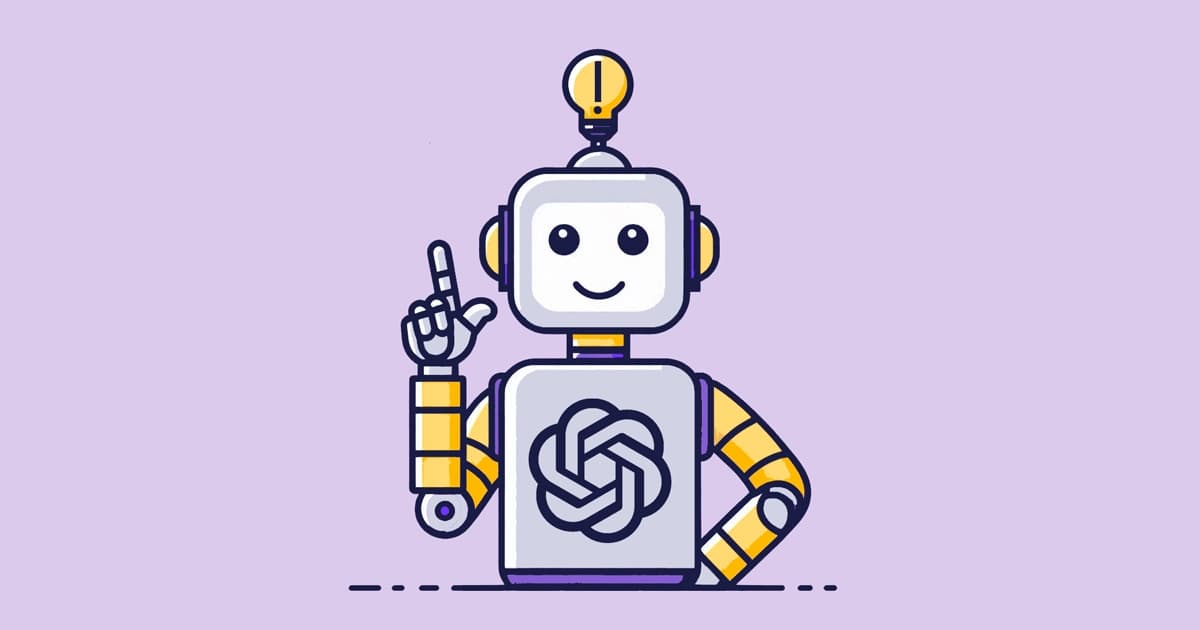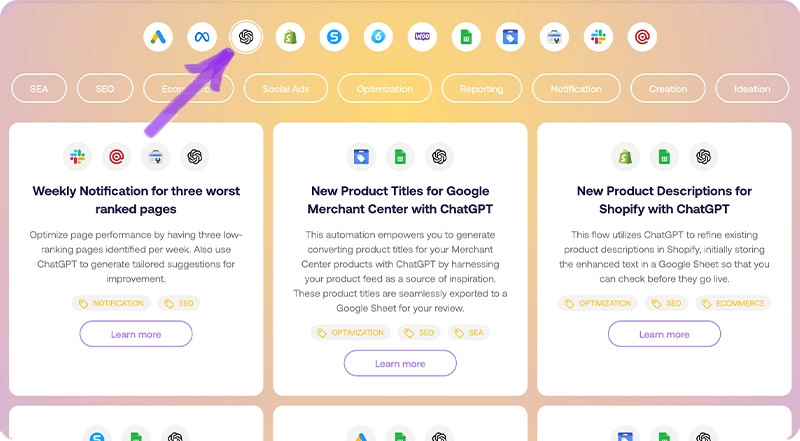ARTIFICIAL INTELLIGENCE
How does ChatGPT actually work?
24.07.2024

ChatGPT has been a household name for less than two years, so it's not surprising that many people still don't know exactly how it works. So it's best to start from the beginning: to understand how ChatGPT works, we need to talk about the underlying engine that powers it.
ChatGPT in a nutshell
The GPT in ChatGPT mainly consists of three related algorithms: GPT-3.5 Turbo, GPT-4 Turbo and GPT-4o. GPT stands for Generative Pre-trained Transformer, and the number simply indicates the version of the algorithm. GPT-4o is slightly different because it is multimodal, which means that it can work with text, images and audio - but we'll come to that later.
The GPT models were developed by OpenAI (the company behind ChatGPT and the DALL-E 3 image generator), but they power everything from Bing's AI features to writing tools like Jasper and Copy.ai. In fact, many of the AI text generators currently available use GPT models, as well as similar models from other companies.
ChatGPT brought GPT into the spotlight because it made the process of interacting with an AI text generator simple and accessible to all.
While GPT is currently the best known large language model (LLM), there are many others. Google, for example, has its Gemini models and Meta has Llama 3, which powers its Meta AI chatbot. Nevertheless, as of today, OpenAI's offering still seems to be the most powerful and widely used language model.
So if you're asking yourself "How does ChatGPT work?", then in terms of the language model (LLM), it's primarily GPT-3.5, GPT-4 and GPT-4o. But that's not all.
So what exactly is ChatGPT?
ChatGPT is an app developed by OpenAI. The GPT AI models can be used to answer your questions, write texts, generate images, design emails, hold conversations, brainstorm ideas, compose songs or explain code in various programming languages - just to name a few examples. This all happens in natural language, i.e. by giving it a voice command. It works like an amazingly good chatbot - and I realize at this point how much most people were annoyed by bad chatbots before.
The latest version of ChatGPT is also multimodal, at least if you're using the GPT-4o model. What's new here is that it can respond to images and audio in addition to text commands. This opens up a variety of real-world applications, such as translating a conversation in real time or identifying a product from a photo.
As of July 2024, ChatGPT offers three GPT models:
- GPT-3.5 is less powerful, but available to everyone for free.
- The more advanced GPT-4 is restricted to ChatGPT Plus subscribers, and they only have a limited number of questions per day.
- GPT-4o is available to everyone, although ChatGPT Plus subscribers receive five times as many commands per day.
One of the greatest features of ChatGPT is that it can remember the entire context of the conversation you are having with it. If you tell it something in your first command, it can remember it much later in the conversation. You can also ask it to revise things and correct mistakes. This makes interacting with the AI a highly interactive experience.
How does ChatGPT work?
ChatGPT works by trying to understand your input (prompt) and then outputting sequences of words that it believes best answer your question. This is done based on the data with which the language model has been trained - i.e. through the large number of search queries made by its users.
Supervised vs. unsupervised learning: How ChatGPT is trained
The "P" in GPT stands for "pre-trained", and this is an important reason why GPT is so powerful. Before GPT, the best AI models only used "supervised learning" to develop their algorithms. They were trained with manually fed data. While such training data is effective in some cases, it is incredibly resource-intensive to create.
GPT takes a path where it is trained in advance in a "supervised" manner and then released onto the internet and fed with all its data, following certain basic rules. When it enters this phase, it is "unsupervised learning" and the language model begins to develop its own understanding of the data.
GPT-4o was trained in a similar way, according to OpenAI. The difference here is that images and audio files were used in addition to text. So GPT-4o has not only learnt to describe a banana, it also knows what it looks like.
What is a prompt?
When using ChatGPT, the term "prompt" is often used. A prompt is basically the input or question you ask an AI like ChatGPT to get a response. Imagine you are talking to a friend and ask them a question or ask for help - you do exactly the same thing with a prompt, only in this case your conversation partner is an AI.
A prompt can look very different. It can be a simple question like "What will the weather be like tomorrow?" or a more complex task like "Write a short essay about the benefits of renewable energy." The AI takes this prompt and tries to give the best possible answer based on the data it has been trained with.
The art of creating good prompts is often referred to as "prompt engineering". The clearer and more precise your prompt is, the better the AI can respond to it. For example, if you want a detailed answer, it's helpful to provide specific information in your prompt. Instead of just writing "Tell me about dogs", you could say "Tell me about the different dog breeds and their characteristics."
Another important aspect of prompts is that they don't have to be all text. With advanced models like GPT-4o, you can also use images or audio as part of your prompt. This opens up many new possibilities, such as recognising objects in a photo or translating spoken language in real time.
To summarise, a prompt is your way of communicating with the AI and controlling it. The better you get at it, the more useful and precise the AI's responses will be.
Multimodality in ChatGPT: images, audio and more
While natural language processing is a big part of ChatGPT, the chatbot has become increasingly multimodal over the past year (as mentioned several times). This means that with GPT-4o (the "o" stands for "omni"), ChatGPT can also understand images and audio as part of the same prompt.
Before GPT-4o, ChatGPT could already understand images by using a separate AI model to create a text description of the image. Similarly, it could "hear" audio input, but actually used a speech-to-text AI model to convert the spoken words into text. In both cases, the text was passed to GPT, which then responded with text or, in some cases, asked DALL-E 3 to create an image. In reality, several tools collaborated with each other to achieve the desired result.
With GPT-4o, the same AI model can understand text, audio and image input and output a response in the form of text, audio or images.
Difference between search engines like Google and ChatGPT
Search engines like Google are designed to provide you with a list of websites that best match your search query. You enter a few search terms (keywords) and Google searches the internet for relevant content. The results are then sorted according to relevance and other factors such as popularity and topicality. Google uses complex algorithms and huge databases to provide you with the best results. It's ideal if you're looking for specific information, websites or products.
ChatGPT, on the other hand, is an AI model that is trained to have human-like conversations. Instead of presenting you with a list of websites, ChatGPT tries to answer your questions directly, summarize things or actively help you solve your task. It can write texts, answer questions, generate ideas, write content and much more. It is especially useful when you need a direct answer or support with more complex tasks.
Key differences
- Result format: Google provides you with links to websites, while ChatGPT gives you direct answers.
- Interactivity: With Google, you do a search and click on results. ChatGPT lets you have an ongoing conversation.
- Scope of application: Google is ideal for searching for specific information on the web. ChatGPT is better for contextual answers and creative tasks.
Both search engines like Google and LLMs like ChatGPT have their strengths and can be used differently depending on your needs. While Google helps you search the web, ChatGPT offers a more interactive and often more personalized experience.
ChatGPT opens up to others thanks to an interface (API)
OpenAI provides interfaces for ChatGPT that allow developers to integrate the power of ChatGPT into their own apps and services - for a fee, of course.
Shopstory uses the ChatGPT API to implement its own workflows and automations that utilize the capabilities of ChatGPT and offer added value for marketers.
Shopstory and ChatGPT result in ecommerce and marketing automation
Efficiency plays a central role in the fast-paced world of ecommerce and marketing. That's why Shopstory leverages the analytical and generative power of ChatGPT to automate a variety of tasks and help businesses achieve their marketing goals faster and more effectively.
Some examples of popular Shopstory workflow use cases that use ChatGPT include the following:
- New keywords for Google Ads with ChatGPT: Use ChatGPT to create new keywords for your Google Ads
- Content suggestions based on good keywords: Use Google Ads performance data to identify valuable keywords that you can convert into relevant blogs through ChatGPT.
- New product descriptions for Shopify with ChatGPT: Use ChatGPT to optimize existing Shopify product descriptions to improve your product pages and SEO scores.
- Weekly Google Ads Performance Report: Automatically receive weekly reports on the performance of your Google Ads campaigns. ChatGPT prepares the results and provides recommendations.
- Keyword Quality Score based ad texts from ChatGPT: Improve the quality score (QS) of keywords that score less than 10 points by generating new ad copy through ChatGPT.
These are just a few illustrative examples to help you get a feel for the range of possibilities. Feel free to take a look at Shopstory's Flow Library and filter by ChatGPT to see more workflows that utilize ChatGPT's capabilities.

In Shopstory's Flow Library you can filter workflows by apps you use, such as ChatGPT.
The examples of workflows should have shown you that hundreds or even thousands of product pages can be optimized simultaneously in ecommerce and marketing (product titles and product descriptions). Not only can you enable a better user experience, but you can also improve your SEO rankings or create suitable content for your target group, generate and analyze automatic reports on the performance of your campaigns (Meta and Google Ads) or even optimize your ad texts in Meta or Google Ads.
Conclusion: The benefits of using ChatGPT in Shopstory
ChatGPT has evolved over the past year from a groundbreaking innovation to an increasingly useful productivity tool. The integration of ChatGPT into Shopstory therefore opens up countless advantages and possibilities. By using ChatGPT, you can create or optimize marketing campaigns quickly and efficiently, which ultimately helps you to better reach your target audience. The automation of routine tasks also saves you valuable time and resources.
Overall, ChatGPT in combination with Shopstory's no-code automation platform makes your life in marketing and ecommerce more efficient and effective, allowing you to focus more on strategic decisions.
If you would like to learn more about Shopstory's no-code automation platform in this context, just click on the following link:
More to Explore
Discover more insights from our latest articles
© 2025, Shopstory









